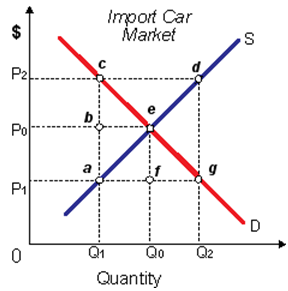When the import market was within equilibrium before the Japanese government began subsidizing all autos exported by the amount dg, in that case U.S. car buyers would be: (w) pay P2 for a car previouslszy priced at P0. (x) suffer Q0 toQ1 unemployment, and will buy fewer imports. (y) gain profit equal to the irregular area bcdge. (z) wind up paying P1 each for Q2 imported cars.

I need a good answer on the topic of Economic problems. Please give me your suggestion for the same by using above options.